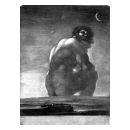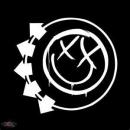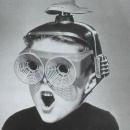"Lamprolog" escribió:
Pos mola un huevo.
A saber lo que vale ..
Te lo he puesto arriba. 535 euros de nada. Los cacharritos de Z Vex son de lo más caro que le puedes enchufar a tu guitarra. En Musicstore tienen la gama completa, échales un vistazo (y verás qué precios).
Por cierto, en la web sobre amplis que alguien ha puesto arriba (donde por cierto también aparece el Nano, hay un artículo muy interesante sobre el volumen de los amplis en relación a su potencia, que como es una función logarítmica da los resultados siguientes:
X% louder = 2^log10(P2/P1) * 100%
40 watts is 94% as loud as 50 watts.
30 watts is 86% as loud as 50 watts.
25 watts is 81% as loud as 50 watts.
22 watts is 78% as loud as 50 watts.
20 watts is 76% as loud as 50 watts.
18 watts is 74% as loud as 50 watts.
15 watts is 70% as loud as 50 watts.
12 watts is 65% as loud as 50 watts.
10 watts is 62% as loud as 50 watts.
9 watts is 60% as loud as 50 watts.
8 watts is 56% as loud as 50 watts.
7 watts is 55% as loud as 50 watts.
6 watts is 53% as loud as 50 watts.
5 watts is 50% as loud as 50 watts.
4 watts is 47% as loud as 50 watts.
3 watts is 43% as loud as 50 watts.
2 watts is 38% as loud as 50 watts.
1 watt is 31% as loud as 50 watts.
3/4 watt is 28% as loud as 50 watts.
1/2 watt is 25% as loud as 50 watts.
1/4 watt is 20% as loud as 50 watts.
1/10 watt is 15% as loud as 50 watts.
50mW is 13% as loud as 50 watts
20mW is 10% as loud as 50 watts.
10mW is 8% as loud as 50 watts.
5mW is 6% as loud as 50 watts.
1mW is 4% as loud as 50 watts.
0.5mW is 3% as loud as 50 watts.
0.1mW is 2% as loud as 50 watts.
50uW is 1.6% as loud as 50 watts.
10uW is 1% as loud as 50 watts.
Es decir, que un ampli de DIEZ MICROWATIOS da el 1% de volumen que uno de 50W (conectado a unos altavoces adecuados, claro está). Si te fijas, puedes hacer sonar el Nano de Z-Vex, que da medio watio con distorsión, a un 25% del volumen de uno de 50W.










